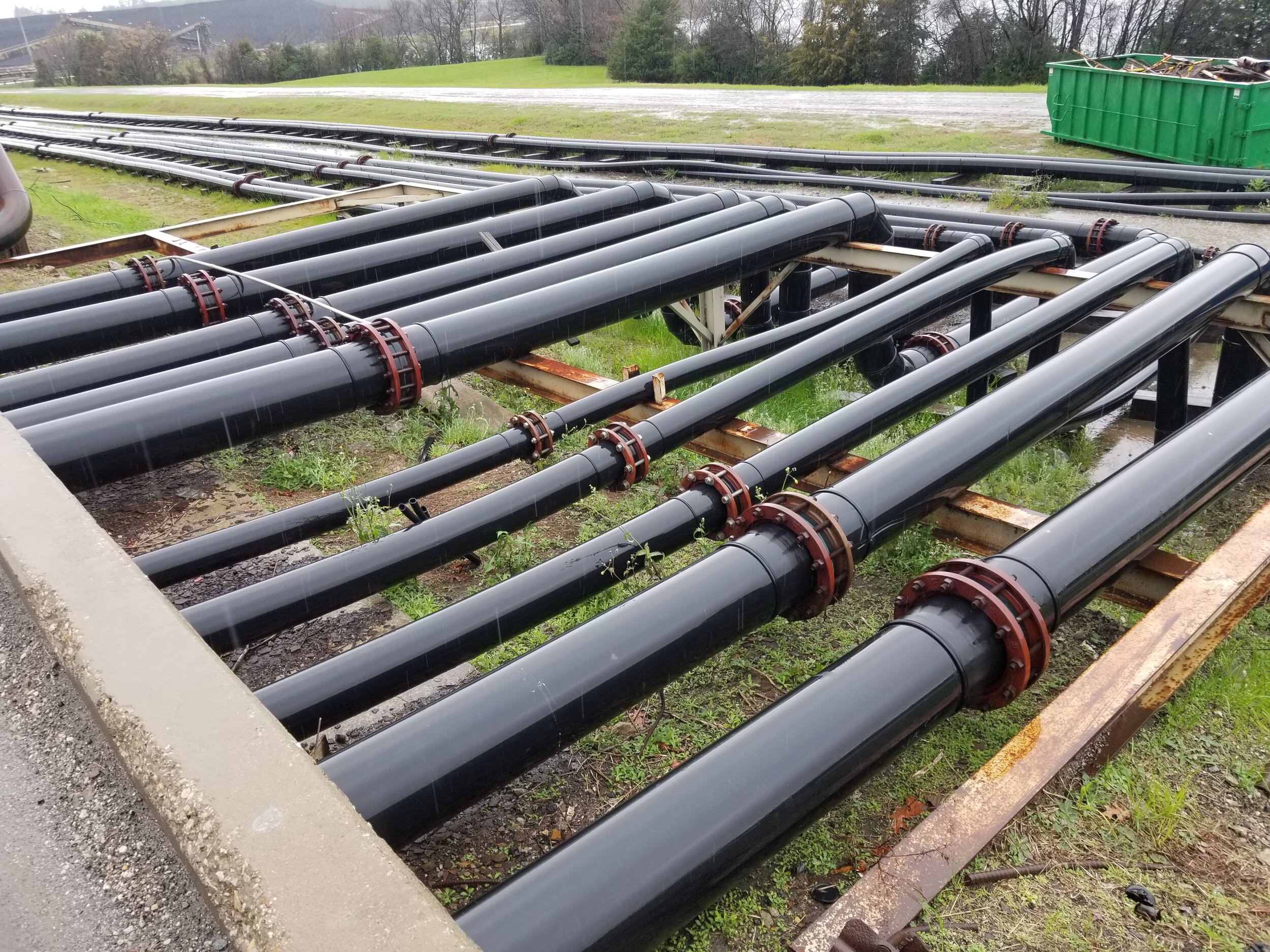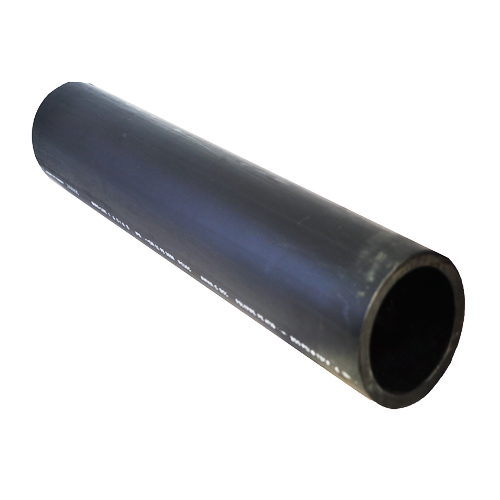The Definitive Handbook to Pipe Manufacturing Midland TX for Industrial Needs
Explore the Production Process Behind High-Quality HDPE Pipeline and Its Applications
The manufacturing process of high-grade HDPE pipes is elaborate and methodical. It begins with the option of raw materials that boost performance. Following this, ethylene undergoes polymerization to create resin, which is after that shaped through extrusion. Quality assurance is extremely important, making sure that the end product fulfills rigorous requirements. However, the journey of HDPE pipelines doesn't end with manufacturing. Their applications across various sectors reveal a wider significance worth taking a look at.
Comprehending HDPE: Qualities and Advantages

High-density polyethylene (HDPE) is a versatile polycarbonate known for its longevity and resistance to different ecological variables. This material shows excellent tensile strength, making it appropriate for demanding applications. Its low-density framework adds to a lightweight product, promoting ease of taking care of and installment. HDPE additionally showcases remarkable resistance to chemicals, which minimizes deterioration when subjected to rough materials.
The product's reduced moisture absorption even more improves its durability, making it suitable for use in pipes and tank. Furthermore, HDPE is resistant to ultraviolet (UV) radiation, making certain that items keep their honesty even when subjected to sunshine. In addition, its versatility enables the creation of intricate shapes without compromising strength. The eco-friendly nature of HDPE, frequently originated from recycled materials, contributes to its allure, advertising lasting methods in manufacturing. On the whole, these homes and advantages make HDPE a recommended option for various industrial and customer applications.
Basic Material Option for HDPE Manufacturing
The option of basic materials for HDPE production is necessary to confirm the final product meets the wanted specs and top quality requirements. High-density polyethylene (HDPE) is mainly generated from polymerized ethylene, obtained from nonrenewable fuel sources such as gas or unrefined oil. The high quality of these feedstocks significantly affects the mechanical and thermal residential or commercial properties of the last HDPE.
Additives additionally play a considerable duty in improving HDPE's performance, consisting of antioxidants, UV stabilizers, and colorants, which boost sturdiness and resistance to ecological elements. The option process need to consider not only the chemical make-up of the raw materials yet also their processing attributes to guarantee effective production.
Moreover, the sourcing of basic materials ought to focus on sustainability and conformity with environmental policies, as responsible techniques are necessary in today's market. Eventually, mindful basic material selection lays the foundation for creating top quality HDPE pipes appropriate for diverse applications.
The Extrusion Process: Forming HDPE Pipe
The extrusion process plays a crucial duty in forming HDPE pipelines, starting with precise material preparation strategies that guarantee suitable circulation and uniformity. Just as essential is the style of the die, which directly affects the last measurements and surface area high quality of the pipeline. Together, these aspects add greatly to the efficiency and high quality of HDPE pipeline manufacturing.
Product Preparation Methods
Reliable manufacturing of HDPE pipelines begins with precise material preparation techniques, particularly the extrusion procedure. Throughout this stage, high-density polyethylene resin is first dried to eliminate moisture, ensuring excellent circulation features. The resin is then fed into the extruder, where it goes through heating and melting, changing right into a viscous state. This heating process is meticulously managed to preserve the product's stability and efficiency. The molten HDPE is compelled with a die, shaping it right into a constant pipe kind. Appropriate temperature monitoring throughout extrusion is necessary, as it directly influences the material's residential or commercial properties and the end product high quality. Once formed, the HDPE pipe is cooled and reduced to specified sizes, ready for subsequent handling and applications.
Die Style Importance
Accuracy in die layout plays an essential function in the extrusion process of HDPE pipelines. The die acts as the last shaping tool, straight influencing the pipe's measurements, wall density, and surface coating. A well-designed die warranties uniform product flow, lowering problems such as abnormalities and vulnerable points. The geometry of the die must be enhanced to suit the particular homes of HDPE, including its viscosity and thermal habits throughout extrusion. Additionally, the cooling rate of the material as it passes via the die can markedly affect the pipeline's architectural honesty. Spending in innovative die innovation is crucial for suppliers intending to generate top quality HDPE pipes that fulfill sector criteria and consumer assumptions.
Quality Assurance Procedures in HDPE Production
Numerous variables influence the high quality of HDPE pipe production, effective quality control measures are crucial to guarantee uniformity and dependability in the last product (hdpe pipe fittings Midland TX). Key quality assurance techniques consist of rigorous product examination, validating that the raw polyethylene fulfills well established standards for pureness and density. During the extrusion process, criteria such as temperature, stress, and cooling time are carefully kept track of to preserve dimensional accuracy and architectural integrity
Furthermore, post-production screening is crucial; makers typically conduct hydrostatic tests to analyze the pipeline's stamina and resistance to stress. Visual evaluations for surface flaws further boost high quality assurance. Qualification from relevant requirements companies, like ASTM or ISO, provides an additional layer of reliability. By applying these comprehensive quality assurance steps, producers can decrease flaws, improve performance, and ensure that the HDPE pipelines fulfill the particular demands of various applications, inevitably resulting in client satisfaction and depend on in the item.
Applications of HDPE Pipe Throughout Industries
HDPE pipelines are utilized across various industries because of their toughness and adaptability. In water distribution systems, they guarantee effective distribution, while in wastewater management, they provide trusted solutions for waste transport. Furthermore, farming irrigation networks gain from HDPE's resistance to corrosion and versatility, making it a perfect option for modern-day farming methods.

Water Circulation Equipments
A significant number of sectors depend on high-density polyethylene (HDPE) pipelines for efficient water circulation systems. Recognized for their sturdiness and resistance to corrosion, HDPE pipes are widely used in metropolitan water networks, go to this website agricultural watering, and industrial applications. Their lightweight nature assists in easy handling and setup, reducing labor expenses and time. In addition, HDPE pipelines can fit different pressure levels, making them ideal for both low and high-pressure systems. American Plastics HDPE Pipe Manufacturing. The versatility of the material permits smooth assimilation into existing framework, lessening the demand for substantial excavation. Additionally, HDPE's resistance to chemical leaching warranties that the water supplied remains safe and tidy, making it a perfect selection for maintaining the quality of potable water across numerous markets
Wastewater Monitoring Solutions
Efficient water distribution systems additionally lead the way for innovative wastewater monitoring options, where high-density polyethylene (HDPE) pipes play a substantial function. Distinguished for their toughness and resistance to corrosion, HDPE pipelines are optimal for transporting wastewater in different settings. Their adaptability allows for very easy installation in complex settings, reducing the demand for substantial excavation. Additionally, HDPE's smooth indoor surface reduces friction, boosting flow prices and effectiveness. These pipelines are likewise immune to chemical leaching, guaranteeing that impurities do not jeopardize the surrounding environment. Industries, communities, and therapy facilities significantly depend on HDPE pipelines for their reliability and durability, making them a recommended choice for contemporary wastewater administration systems. This versatility underscores the essential value of HDPE pipelines throughout various applications.
Agricultural Irrigation Networks
Agricultural watering networks profit greatly from using high-density polyethylene (HDPE) pipelines, which offer effective and trusted water delivery to crops. HDPE pipes are light-weight, making them very easy to transport and install, you could look here while their adaptability permits numerous arrangements in diverse surfaces. These pipelines show superb resistance to corrosion, chemicals, and UV radiation, ensuring sturdiness in extreme farming settings. Additionally, their smooth interior surface minimizes friction loss, maximizing water flow and decreasing power costs associated with pumping. The longevity of HDPE pipes, commonly going beyond half a century, adds to lower maintenance and replacement expenses. Consequently, farmers increasingly rely upon HDPE pipes to enhance irrigation performance and advertise lasting farming practices, ultimately leading to boosted plant yields and resource conservation.
Future Fads in HDPE Pipeline Innovation
As the need for lasting and reliable infrastructure grows, improvements in HDPE pipeline technology are poised to transform different markets. Arising fads consist of the integration of smart technologies, such as sensors and IoT abilities, which facilitate real-time monitoring of pipeline conditions, decreasing maintenance prices and protecting against leakages. In addition, the growth of innovative manufacturing methods, such as 3D printing, is allowing the production of complex, customized pipe designs that accommodate particular project needs.
Moreover, the emphasis on recycling and circular economy practices is driving the innovation of HDPE pipes made from recycled products, boosting sustainability. Improved jointing methods, such as electro-fusion and mechanical fittings, are additionally boosting setup efficiency and integrity. The growing focus on environmental guidelines is pushing manufacturers to take on greener production procedures, guaranteeing that HDPE pipes not only fulfill industry criteria but additionally cultivate an even more sustainable future for infrastructure growth.
Often Asked Questions
Just How Does HDPE Compare to Various Other Plastic Products?
HDPE outmatches numerous various other plastic materials pertaining to toughness, chemical resistance, and flexibility. Its low thickness and high tensile strength make it suitable for various applications, commonly surpassing alternatives in both efficiency and long life.
What Are the Environmental Effects of HDPE Manufacturing?
The ecological effects of HDPE manufacturing consist of greenhouse gas emissions, energy intake, and potential air pollution from making processes. Furthermore, incorrect disposal can bring about soil and water contamination, increasing problems concerning long-term environmental impacts.
Can HDPE Piping Be Recycled?
Yes, HDPE pipes can be reused. Several centers approve made use of HDPE for processing, changing it right into brand-new items. This reusing contributes to sustainability efforts, minimizing plastic waste while preserving sources and energy in the manufacturing cycle.
What Is the Life Expectancy of HDPE Pipes?

How Do Temperature Level Variations Impact HDPE Pipe Performance?
Temperature level variations substantially impact HDPE pipe efficiency, impacting adaptability and strength. High temperature levels can bring about softening, while low temperature levels may trigger brittleness, ultimately click here to read affecting the pipe's toughness and suitability for numerous applications in varied environments.